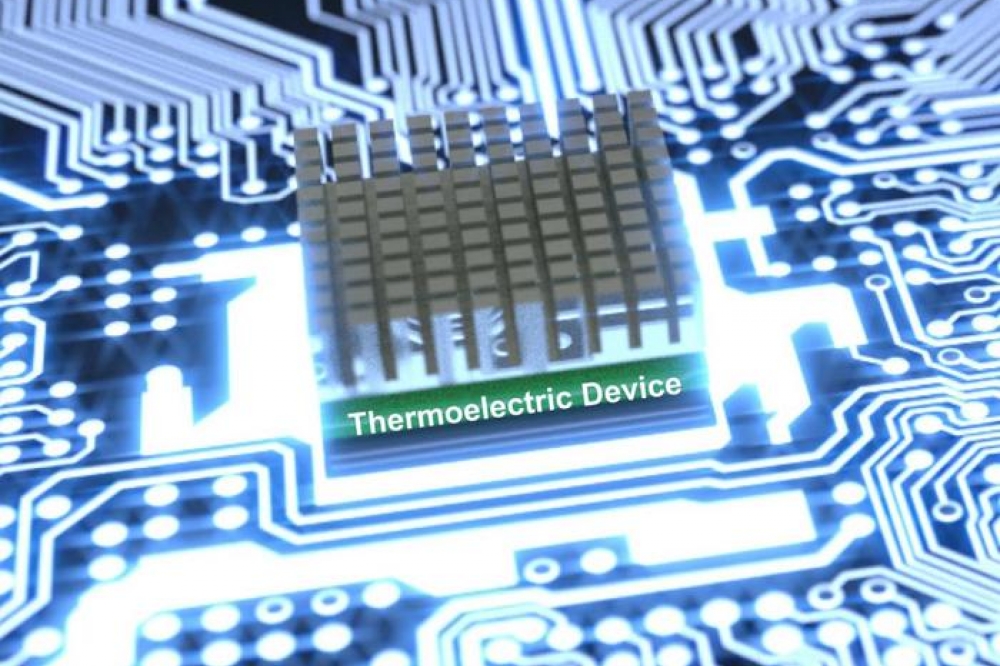US team creates novel chip cooler

Half-Heusler thermoelectric device shows 210 percent enhancement in cooling power density over Bi2Te3 devices
A new thermoelectric cooler developed by Penn State scientists greatly improves the cooling power and efficiency compared to current commercial thermoelectric units and may help control heat in future high-power electronics.
Their research 'Half-Heusler alloys as emerging high power density thermoelectric cooling materials' was published in Nature Communications.
“Our new material can provide thermoelectric devices with very high cooling power density,” said Bed Poudel, research professor in the Department of Materials Science and Engineering at Penn State. “We were able to demonstrate that this new device can not only be competitive in terms of technoeconomic measures but outperform the current leading thermoelectric cooling modules. The new generation of electronics will benefit from this development.”
Thermoelectric coolers transfer heat from one side of the device to the other when electricity is applied, creating a module with cold and hot sides. Placing the cold side on electronic components that generate heat, like laser diodes or microprocessors, can pump the excess heat away and help control the temperature. But as those components become more powerful, thermoelectric coolers will also need to pump more heat, the scientists said.
This study used Sb-pressure controlled annealing process to modulate the microstructure and point defects of Nb0.55Ta0.40Ti0.05FeSb compound, resulting in a 100 percent increase in carrier mobility and a maximum power factor of 78 µW cm−1 K−2, approaching the theoretical prediction for NbFeSb single crystal.
The new thermoelectric device showed a 210 percent enhancement in cooling power density compared to the leading commercial device, made of Bi2Te3, while potentially maintaining a similar coefficient of performance (COP), or the ratio of useful cooling to energy required, the scientists reported.
“This solves two out of the three big challenges in making thermoelectric cooling devices,” said Shashank Priya, vice president for research at the University of Minnesota and a co-author on the paper. “First, it can provide a high cooling power density with a high COP. This means a small amount of electricity can pump a lot of heat. Second, for a high-powered laser or applications that require a lot of localised heat to be removed from a small area, this can provide the optimum solution.”
The new device is made from a compound of half-Heusler alloys, a class of materials with special properties that show promise for energy applications like thermoelectric devices. These materials offer good strength, thermal stability and efficiency.
The researchers used a special annealing process that allowed them to modify and manipulate the microstructure of the material to remove defects. It had not been used previously to make half-Heusler thermoelectric materials, the scientists said. The annealing process also dramatically grew the grain size of the material, leading to fewer grain boundaries.
“In general, half-Heusler material has very small grain size — nano-sized grain,” said Wenjie Li, assistant research professor in the Department of Materials Science and Engineering at Penn State. “Through this annealing process we can control the grain growth from the nanoscale to the microscale — a difference of three orders of magnitude.”
Reducing the grain boundaries and other defects substantially enhanced carrier mobility of the material yielding a higher power factor, the scientists said. The power factor determines the maximum cooling power density and is especially important in electronics-cooling applications.
“For instance, in laser diode cooling, a significant amount of heat is generated in a very small area, and it must be maintained at a specific temperature for the optimal performance of the device,” Li said, “That’s where our technology can be applied. This has a bright future for local high thermal management.”
In addition to the high power factor, the materials produced are said to feature the highest average figure of merit, or efficiency, of any half-Heusler material in the temperature range of 300 to 873 degrees Kelvin (80 to 1,111 degrees Fahrenheit.) The scientists said the results show a promising strategy for optimising half-Heusler materials for near-room-temperature thermoelectric applications.
“As a country we are investing a lot in the CHIPS and Science Act, and one problem might be how the microelectronics can handle high-power density as they get smaller and operate at higher power,” Poudel said. “This technology may be able to address some of these challenges.”
Researchers on the project were supported by grants from the Office of Defense Advanced Research Projects Agency, Office of Naval Research, US Department of Energy, National Science Foundation and the Army Small Business Research Program.

































